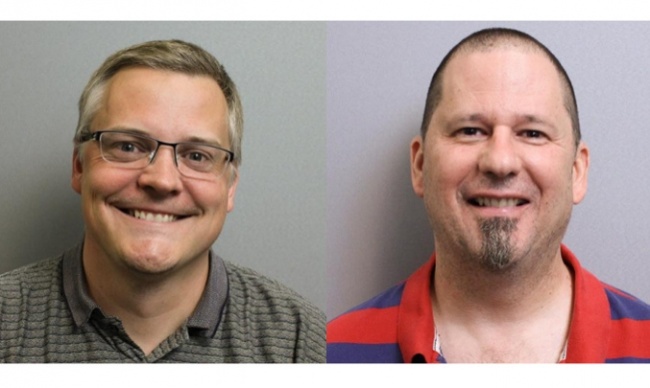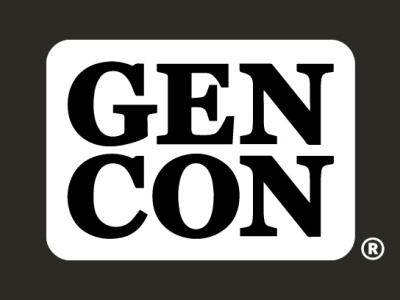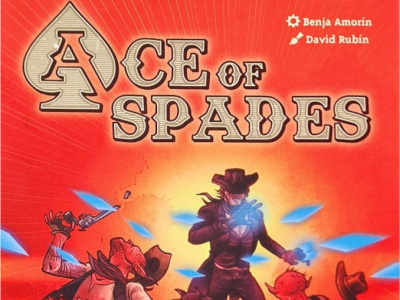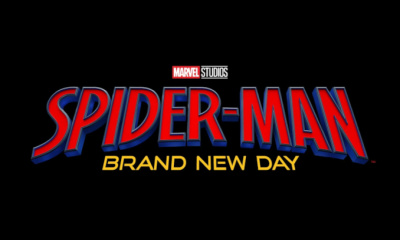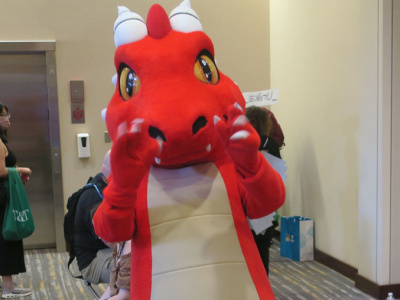Earlier this fall, we visited the Roseville, Minnesota headquarters of game giant Asmodee North America and conducted a series of interviews with Asmodee North America CEO Christian Petersen and Asmodee CMO Steve Horvath. In Part 2 of this two-part interview on ANA’s consolidation and restructuring, we talk about Asmodee’s plans for publishing volume and the role of ANA vs. the studios, for the trade and for consumers. In Part 1, we discussed what went well with the consolidation, what didn’t, and the lessons of the sports card business.
For the rest of our interviews with Asmodee execs:
ICv2 Interview: Asmodee Execs on the State of the Market, Part 1
ICv2 Interview: Asmodee Execs on the State of the Market, Part 2
ICv2 Interview: Asmodee Execs on New Distribution Policies
ICv2 Interview: Asmodee Execs on the ANA Consolidation, Part 1
ICv2 Interview: Asmodee Execs on Diversity in Hobby Games
ICv2 Interview: Asmodee Execs on Counterfeiting
You talked about the glut of products. It’s a little hard to get apples to apples comparisons because of the rollup that Asmodée has been engaged in, but is the combined total of the companies that are now under the ANA umbrella producing more games than a year or two ago?
Petersen: I think it's the same or a little less. I don't think any particular company is generating more games than they were before.
Horvath: That is correct, I can tell you.
Petersen: I think from an FFG perspective, the overall output of new SKU’s is about the same or less.
I think the one exception out there may be Plaid Hat Games. We've invested in more people and resources for that studio. That's going to enable them to really get their vision for games fulfilled, I believe. Before, Plaid Hat was either too small or may not have gotten funded to the extent that they were desiring. We've tried to unleash them so they can really express themselves and innovate beautiful and fun games. I love what the Plaid Hat team is cooking. Results will take a little while to see the market, though, the best fruit do not grow overnight.
It’s interesting that, in the public, when Asmodée has acquired a company or a game, and then three months later, something happens (or doesn’t happen) to that acquired studio or game, then this is all attributed to Asmodée’s influence [laughs]. Most games probably take about a year, year and a half, to actually plans and make (or longer). Any influence from Asmodee, good or bad, is going to take a year or two to show itself. Of course, we think the influence will be positive and good!
It seems like there's confusion over what the Asmodée brand means, partly related to the way it was being used before, and the integration of the various companies here. Maybe you could talk a little bit about Asmodée North America, the studio brands, how those relate, and what you're trying to make Asmodée stand for in the US?
Horvath: As we came into the group, and various other companies, as you talked about, all the acquisitions over the last couple years, the Asmodée name meant something different to just about everybody you talk to.
In some areas, it's a distributor. Some areas, it's a publisher. Some areas, it's both. Some, it's somewhere in between. What we've been working on very hard at the group level is to redefine that in a way that makes sense consistently across the world.
What you're going to see going forward, you may have noticed this at Gen Con this year, there was not an Asmodée booth. There was a retail store that sold the products from many of the Asmodée studios, but it was not branded Asmodée.
Was it branded at all?
Horvath: It was branded the Game Center, just a generic name.
The name Asmodée is evolving into a business-to-business, or B2B, brand, because it's the studios’ brands that are important and what drives the consumers.
We have a belief that gamers really congregate in tribes, meaning that likeminded gamers come together. There’s big fans of Days of Wonder games that may not like the style of games from another studio, for example, Z-Man fans may not generally care for games made by FFG, etc. We're trying to bring those brands to the forefront so you can identify with the brand, that really calls to you personally. If there is an Asmodée aggregation at a show like Gen Con where all the brands are all mixed together, you're not touching that experience, game, or company that you want as a gamer following passionately.
If you're a fan of Z-Man games, we want that to be a very clear trail for you to find those games, that studio, and the people behind Z-Man. We want players to engage with their preferred brands in a way that is more pure — not as an amalgamation. We're a games company. It's the games people love, and the people that work hard at making them every day, not the logo that's up on our building.
Petersen: Especially not the logo that comes from the business side. We want the studios to be expressed in a unique voice, and allow them to make products with their unique stamp. We want players to interface with them and identify with them individually. Players should not need to love every brand that falls under the Asmodee B2B banner, but we certainly hope a few of our brands will call to every player out there.
Asmodée in the past here was used as consumer brand. Now, it's not going to be, if we understand correctly, and you're going to basically use the original studio that designed and created the game as the brand here in the States for consumers. How many consumer brands will there be for the Asmodée North America group here?
Petersen: Some of the brands are within our purview to invest in and to assist in brand marketing. Some of the other brands, Asmodee distributes, and we facilitate their wholesale and trade-marketing business in many territories, but it's not our responsibility to create their consumer branding — they are their own best advocates and voices, we should not get between them and the players.
Is that the difference between Space Cowboys and Repos?
Petersen: That's correct. Space Cowboys is a studio that's owned by the Asmodée group, where Repos is an independent company that we're a close partner with, as a distributor. We help and partner with them to try to get them exposure, help them logistically, we'll try to make sure that they understand the market well, but we don't have publisher margin on those. So in terms of the investment, the voice, and the way they want to express themselves in the marketplace, Asmodee will help them, but the voice and investment has to primarily come from them.
Horvath: We do some marketing on their behalf, but there is a solid distinction, as Christian said, between the studios that we own and the studios that we don't in regards to consumer marketing.
Petersen: It's not that necessarily that we would market them any less or any differently to the trade, but we need them to engage with the consumers in their own way.
Asmodée distributes Pokémon in Europe, right?
Petersen: We do, but we generally don't market Pokémon to the public. Pokémon markets their own games, and we help.
That would be like the relationship between Asmodée North America and Repos?
Petersen: Correct. We will help them. Repos is great publisher, and we want them to have the best marketing that they could possibly achieve.
Horvath: We do a lot. For Repos, for example, we represented them at Gen Con this year, which is above and beyond the normal call for a distribution relationship. We're trying to go out of our way for our distribution partners where we can.
It would be good to clarify, these are the brands Asmodée owns, these are the brands Asmodée distributes. They're all going to be sold under their own brands in slightly different ways.
Petersen: They will all be sold under Asmodée North America at the B2B level, if you're a retailer and you want to go buy it — you’ll find them in the Asmodee “tent”. The way that they're going to be expressed to the public, however, is via their own voice and identity.
Horvath: Asmodee does extensive trade marketing. For instance, the Alliance specialty team recently just finished a promotional project on behalf of Repos where they called thousands of hobby game retailers to talk about a big promotion for “Seven Years of Seven Wonders.”
Trade marketing is happening with all our different publishers, whether they're Asmodée Group studios, or they're the studios that we're distributing.
Petersen: In other words, from a trade marketing perspective, we treat everybody equally, regardless of whether you're our studio or another studio. When it comes to the responsibility for brand marketing, consumer marketing, that's where it falls more on the studios themselves. We are there to help and facilitate, but not get in the way.
Click here to go back to Part 1.
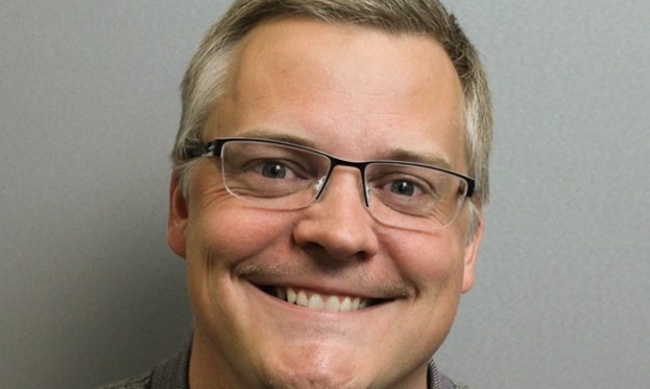
How Many Titles, the Role of ANA vs. the Studios
Posted by ICv2 on January 3, 2018 @ 2:32 am CT
MORE GAMES
Column by Scott Thorne
August 11, 2025
This week, columnist Scott Thorne notes a new twist in the Diamond Comic Distributors saga and shares his thoughts on the Gen Con releases that will make the biggest impacts.
Due to 'Inappropriate Illustrations'
August 11, 2025
Devir Games is recalling its recently released game Ace of Spades, which it acknowledges included "inappropriate illustrations, texts, and card effects."
MORE NEWS
Showbiz Round-Up
August 11, 2025
The summer heat is on, and Hollywood news is boiling over. Time for a round-up!
Thursday July 31, 2025; 'D&D,' 'Riftbound,' and More!
August 8, 2025
The story of Gen Con 2024, as told through ICv2's staff photos, began on the morning of Thursday July 31, 2025 on the convention hall floor.



